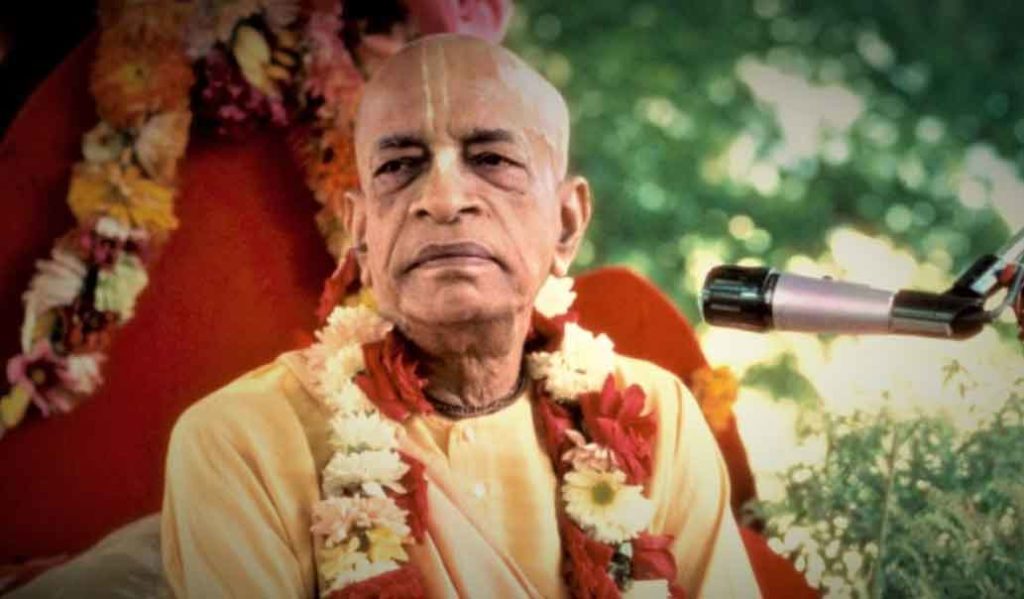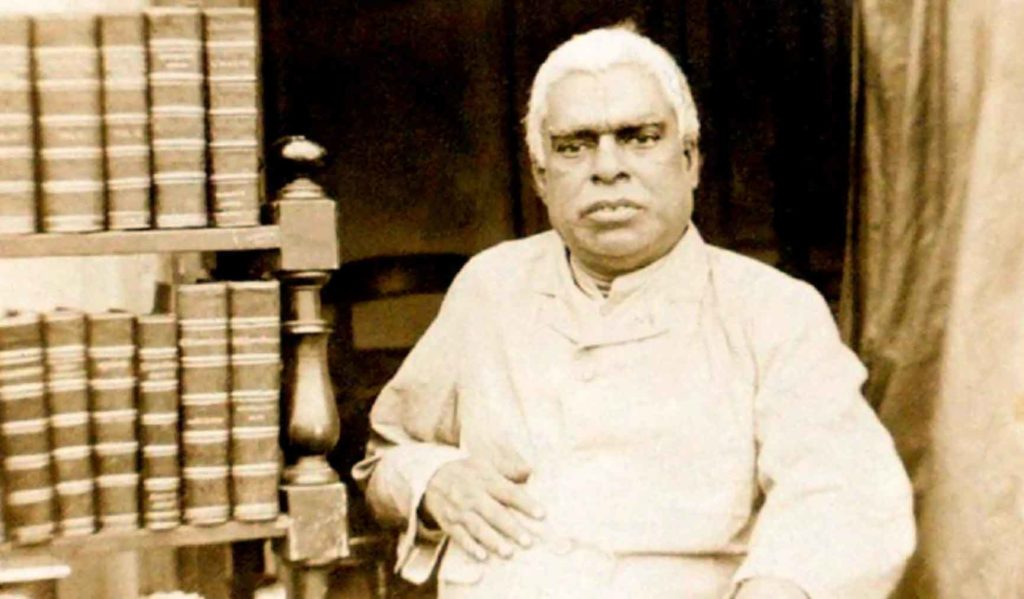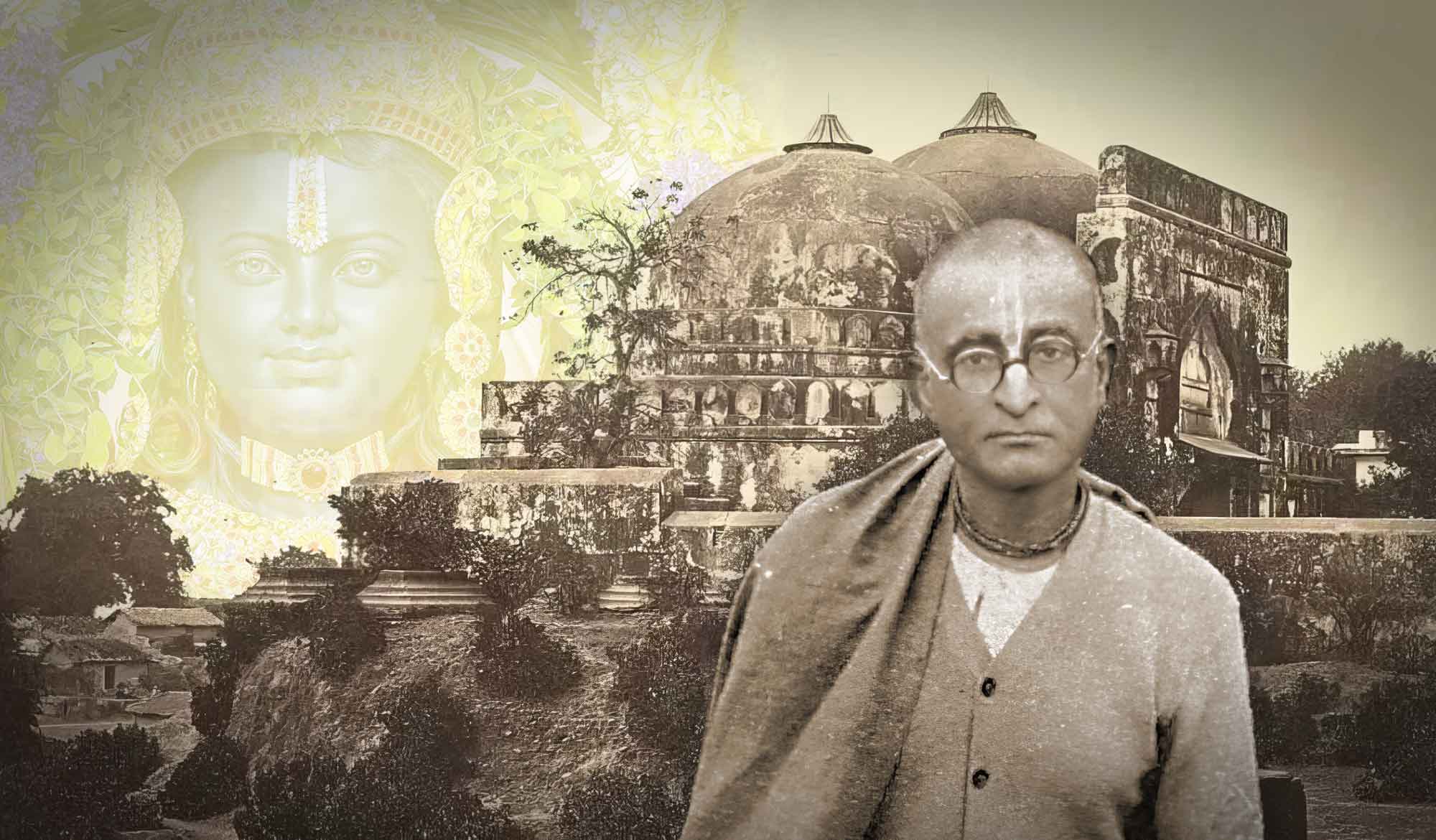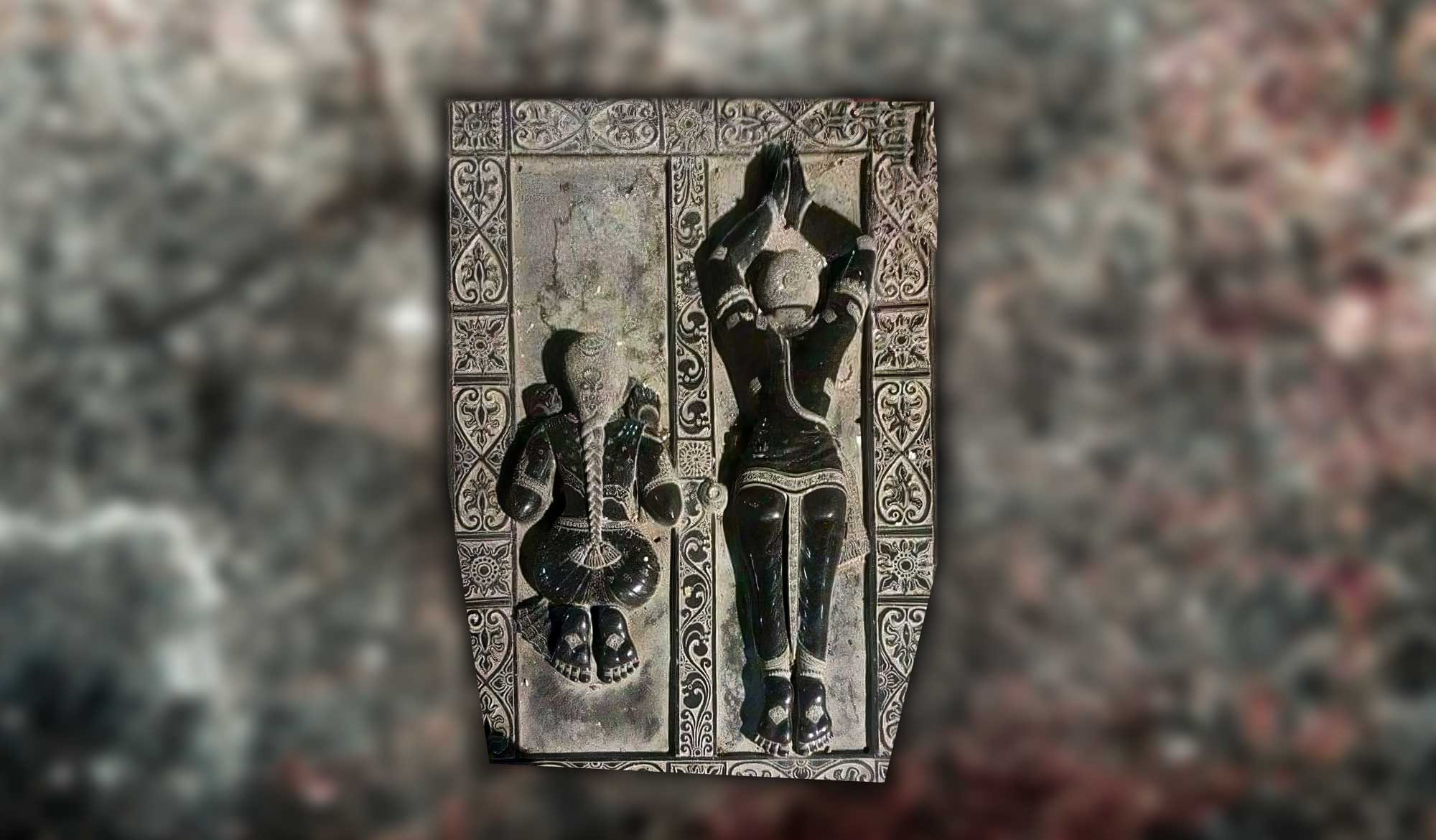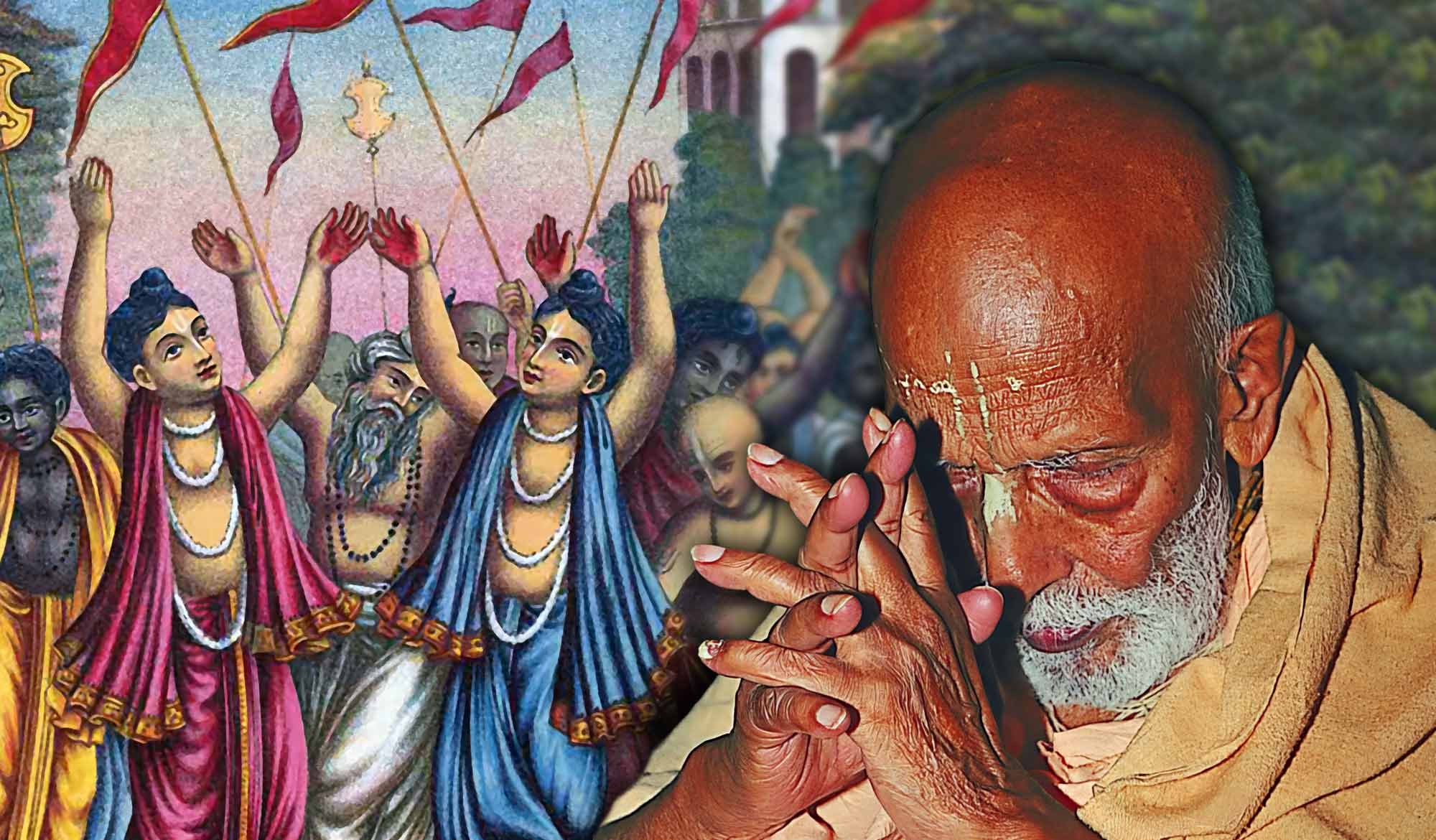Overview
In “Can the Guru Make Mistakes?” written in 1998 Śrīla Narasiṅgha Mahārāja answers this question by citing the famous verse from Bhāgavatam, ‘ācāryaṁ māṁ vijānīyān’ and explaining how the disciple never sees the guru as jīva-tattva.
Question: Can the guru make mistakes?
Answer: We must always hold our guru in the highest regard. The disciple must see the guru as the representative of Kṛṣṇa. The guru is never to be considered an ordinary man, jīva-tattva.
ācāryaṁ māṁ vijānīyān navamanyeta karhicit
na martya-buddhyāsūyeta sarva-deva-mayo guruḥ
“One should know the ācārya as Myself and never disrespect him in any way. One should not envy him, thinking him an ordinary man, for he is the representative of all the demigods.” (Bhāg.11.17.27)
Because the guru is representing Kṛṣṇa at every moment he is no longer seen by the disciple as an ordinary jīva. He is understood in the eyes of the disciple as guru-tattva. Whatever the guru does will be seen by the faithful disciple as wonderful, pure, perfect, and always representing Kṛṣṇa. Therefore, in the eyes of the disciple the guru never makes a mistake.
The non-disciple section, however, may find fault with our guru. They may regard him as an ordinary man and this is intolerable for a genuine disciple. If by chance the guru misspells or incorrectly pronounces a word the enthusiastic neophyte disciple will feel his guru is right and, if necessary, the dictionary should be changed. But the non-disciple will see such a thing as a mistake. A more senior disciple will consider that if the non-disciple section sees a so-called mistake committed by his guru that they will consider him an ordinary man and therefore miss the chance to take to Kṛṣṇa consciousness. A senior disciple will consider the necessity to correct whatever so-called mistake his guru has made for the benefit of the non-disciple section.
While correcting his guru’s so-called mistake a sincere disciple will think, “Oh, my guru is so kind. He is showing some defect just to give me a chance to serve him.” Our Guru Mahārāja, Śrīla A.C. Bhaktivedānta Swami Prabhupāda used to say, “You are all helping me to spread this Kṛṣṇa consciousness movement all over the world.” But we were thinking that he was so kind that he allowed us some service in his mission. Actually Śrīla Prabhupāda did not require our help and whatever we are doing in the right way is simply by his grace. Śrīla Prabhupāda could have spread this movement singlehanded. And actually he did that.
Similarly, Śrīla Prabhupāda used to say that, “Lord Caitanya Mahaprabhu could have spread Kṛṣṇa consciousness all over the world not just India. But He is so kind that He has given us some service in His saṅkīrtana movement.” This is the mood of all great ācāryas and spiritual masters in our disciplic succession.
There is a danger for the disciple if he considers the so-called mistakes of his guru to arise from the conditioning of the three modes of material nature. Therefore, we must be very careful how we associate with the guru and in what consciousness we observe his activities. Even the senior disciple will experience great difficulty if he proudly thinks that his guru is dependent on his services. So Kṛṣṇa has said, ācāryaṁ māṁ vijānīyān – “Know the ācārya as My very self.” There can never be a material defect in Kṛṣṇa. He is purely transcendental, Acyuta, above the senses and the laws of material nature.
The disciple must always remember this śloka and maintain such regard for his guru. There is no difference between your guru and my guru yet we will not necessarily see other’s guru in the same way as we see our guru. In the private gathering of our godbrothers and godsisters we may express such exclusive vision that our guru is the best of millions of jagat-gurus. And it must be so. Otherwise why have we come to the shelter of our guru?
Related Articles
- Guru is One by Śrīla Bhakti Gaurava Narasiṅgha Mahārāja
- Omniscience? by Śrīla Bhakti Gaurava Narasiṅgha Mahārāja
- Paramparā by Śrīla Bhakti Gaurava Narasiṅgha Mahārāja
- The Vision of Guru by Śrīla Bhakti Gaurava Narasiṅgha Mahārāja
- Ekalavya and Arjuna by Śrīla Bhaktisiddhānta Sarasvatī Ṭhākura
- Can the Guru Make Mistakes? by Śrīla Bhakti Gaurava Narasiṅgha Mahārāja
- The Post of Guru by Śrīla Bhakti Gaurava Narasiṅgha Mahārāja
- The Compassionate Nature of Śrī Guru by Śrīla Bhakti Kiśora Āraṇya Mahārāja
- Is a Guru Necessary? by Gaura Gopāla Dāsa
Prabhupāda Śrīla Sarasvatī Ṭhākura’s Visit to Ayodhyā
With the forthcoming observance of Śrī Rāma Navamī, we present 'Prabhupāda Śrīla Sarasvatī Ṭhākura’s Visit to Ayodhyā' written by Śrīla Bhaktisiddhānta Sarasvatī Ṭhākura Prabhupāda from The Gaudīyā magazine, Vol 3. Issue 21/ In December 1924, after visiting Benares and Prāyāga, Sarasvatī Ṭhākura visited the birth-site of Śrī Rāmācandra in Ayodhyā.
Śaraṇāgati – The Only Path to Auspiciousness
In this article, 'Śaraṇāgati - The Only Path to Auspiciousness', Dhīra Lalitā Dāsī analyses the process of śaraṇāgati (surrender) beginning with śraddhā (faith). She also discusses the role of śāstra and the Vaiṣṇava in connection with surrender.
Ātma Samīkṣā – The Value of Introspection
In this article, "Ātma Samīkṣā – The Value of Introspection" Kalki Dāsa highlights the importance of introspection in the life of a devotee and especially in relation to the worldly environment that surrounds us. He also explains how transcendental sound influences our capacity to introspect.
Svasti No Gaura-vidhur Dadhātu (May the Moon-like Gaura Bestow Auspiciousness)
This Bengali poem, ‘Svasti No Gaura-vidhur Dadhātu,’ (May the Moon-like Gaura Bestow Auspiciousness) written by Śrīla Bhakti Pramoda Purī Gosvāmī, was first published in 1965 in Caitanya Vāṇī magazine, Vol.5, Issue 1. In this composition, Śrīla Purī Mahārāja gives advice to the fallen jīvas to sincerely accept Mahāprabhu's gift of the Holy Name. This poem was translated into English by Sanātana Dāsa and Parameśvarī Devī Dāsī.
Prabhupāda Śrīla Sarasvatī Ṭhākura’s Visit to Ayodhyā
With the forthcoming observance of Śrī Rāma Navamī, we present 'Prabhupāda Śrīla Sarasvatī Ṭhākura’s Visit to Ayodhyā' written by Śrīla Bhaktisiddhānta Sarasvatī Ṭhākura Prabhupāda from The Gaudīyā magazine, Vol 3. Issue 21/ In December 1924, after visiting Benares and Prāyāga, Sarasvatī Ṭhākura visited the birth-site of Śrī Rāmācandra in Ayodhyā.
Śaraṇāgati – The Only Path to Auspiciousness
In this article, 'Śaraṇāgati - The Only Path to Auspiciousness', Dhīra Lalitā Dāsī analyses the process of śaraṇāgati (surrender) beginning with śraddhā (faith). She also discusses the role of śāstra and the Vaiṣṇava in connection with surrender.
Ātma Samīkṣā – The Value of Introspection
In this article, "Ātma Samīkṣā – The Value of Introspection" Kalki Dāsa highlights the importance of introspection in the life of a devotee and especially in relation to the worldly environment that surrounds us. He also explains how transcendental sound influences our capacity to introspect.
Svasti No Gaura-vidhur Dadhātu (May the Moon-like Gaura Bestow Auspiciousness)
This Bengali poem, ‘Svasti No Gaura-vidhur Dadhātu,’ (May the Moon-like Gaura Bestow Auspiciousness) written by Śrīla Bhakti Pramoda Purī Gosvāmī, was first published in 1965 in Caitanya Vāṇī magazine, Vol.5, Issue 1. In this composition, Śrīla Purī Mahārāja gives advice to the fallen jīvas to sincerely accept Mahāprabhu's gift of the Holy Name. This poem was translated into English by Sanātana Dāsa and Parameśvarī Devī Dāsī.



